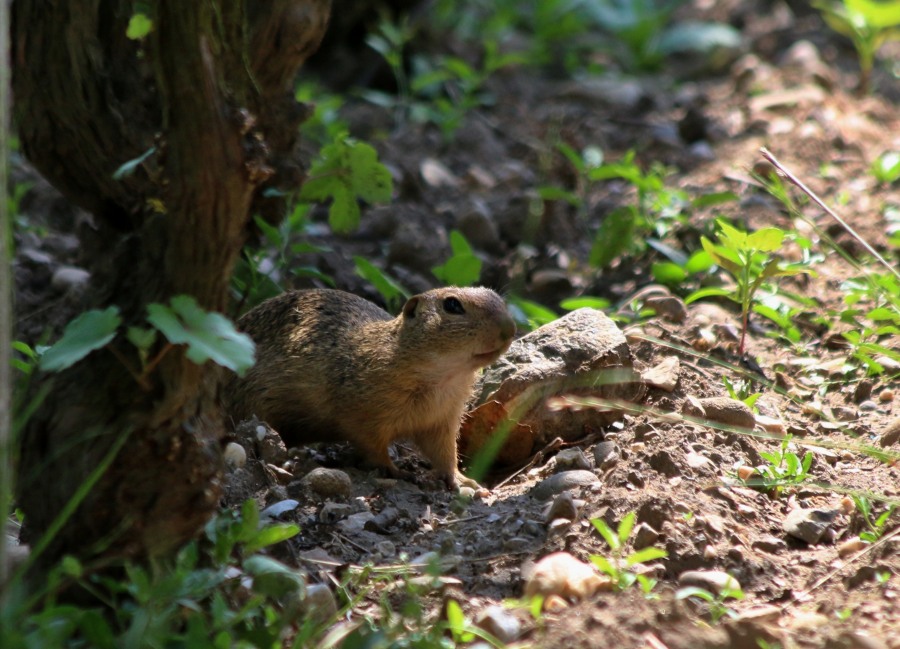Funding
Programme: Interreg V-A Slovak Republic - Czech Republic
Together without borders / Together without borders

Date
–
Partners
ALKA Wildlife, o.p.s. (Main partner)
DAPHNE – Inštitút aplikovanej ekológie (Main cross-border partner)
Website
Contact
Kateřina Poledníková
Target species
European souslik
Countries
Czechia, Slovakia
Project aims
The European Ground Squirrel, also known as European souslik or simply souslik, is an endangered species and one of Europe’s rarest mammals. Currently, only 24 isolated localities are known from the programme area (scattered across the Trenčín, Trnava and South Moravian regions).
The aim of the project is to contribute to the rescue of the souslik across the programme area through a comprehensive set of activities. These will include: research, monitoring, implementation of measures to support the species and its environment, education, establishing contacts, transferring experience and sharing documents with the state administration advising on conservation priorities. Also, recommendations for action, a data sharing tool, will be created. The project will contribute to improving the environment for the region’s inhabitants. The project will also target visitors to the region to whom the sousliks will be presented as a representative of the local nature and a symbol of a well-preserved steppe agricultural landscape.

Project activity
The project will be mirrored in both countries with the aim to provide complex protection of the species. Research, mapping and population monitoring will be required to capture missing data for subsequent prioritisation and effective action. In both countries, mapping the occurrence and searching for unknown colonies of sousliks will be carried out alongside monitoring the current known colonies. The project will also research the genetic diversity of the populations of sousliks, study the environment they inhabit and interrogate the interconnections between potential suitable environment across the countryside between populations. Subsequently, all knowledge will then be combined in a comprehensive analysis of population viability.
Functioning measures to improve the condition, and prevent deterioration, of souslik populations currently exist. In some areas, these measures will be implemented, focussing around two key support methods. The first includes indirect support of the sousliks through habitat maintenance. This could include actions such as mowing grass, collection and sowing of calorific plants and herbs, tree maintenance including planting fruit trees and grafting existing trees, preservation of meadows and regulating pasture grazing. Secondly, measures such as replenishment of individuals, protection against predators, feeding, and building breeding facilities will provide direct support to the sousliks. The measures will be implemented by project staff, through cooperation with the public and by communication and cooperation with landowners/farmers.
As well as the implementation of these protective measures, the project will focus on increasing media coverage of this endangered species. Education of the professional and general public is vital for each individual local population of sousliks. All members of a community who owns a garden, orchard or vineyard can help save the souslik or, on the contrary, kill it with their activities. The education and cooperation of landowners is also crucial as the way the local landscape is managed can directly influence the future development of the souslik population. Therefore, education initiatives will take place both passively through lectures, excursions, promotional events, published materials, websites, information boards, teaching programs and actively through involving the public and landowners in specific activities.
Throughout the project, information and experience of project activities will be shared between the project partners. Partner activity will take the form of workshops, excursions, reports, brochures, a joint conference, creation of recommended measures and the creation an online souslik occurrence map application. Data and other information generated from the project will be, in turn, transferred to government officials from local authorities up to regional and national administrations.
According to the Czech legislation, the European souslik is a critically endangered species and specifically, a protected species in the highest category. On the other hand, according to the Slovak legislation, it is a protected species of European significance, which has the status of “EN” according to the manual for the care of NATURA 2000 territory. Several activities of this project directly fulfil the measures set out in the Czech Rescue Programme such as restoration of sites with a suitable habitat, demographic research, education aimed at landowners and the creation of a catalogue of sites. In Slovakia, however, conceptual material focused directly on this species does not exist at the national level, but the project outputs will serve as a basis for the creation of a future Slovak Rescue Programme.
News
Souslik Information Stand in Pavlovice
Saint Martin will bring ‘souslik’ wine to the village

